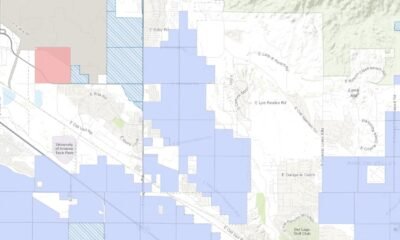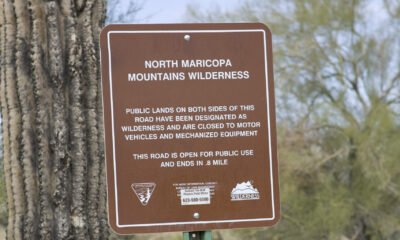border
Enviros Challenge Plan to Cut Border Patrol Road Through Protected Nogales Land

The Center for Biological Diversity has voiced strong opposition to U.S. Customs and Border Protection’s (CBP) plans to construct roads through the Coronado National Forest near Nogales, Arizona. The environmental group argues that the required environmental review does not comply with federal standards.
The Holden Canyon Connector Road Project aims to enhance and construct nearly 13 miles of unpaved road while decommissioning about 4 miles. Proponents of the project claim that the environmental impact is negligible, stating that any adverse effects can be completely mitigated through best management practices.
In November, CBP and the U.S. Forest Service released a draft environmental assessment and solicited public feedback. The Tucson-based environmental organization responded, asserting that the impacts of the proposed action were inadequately disclosed and analyzed, violating the National Environmental Policy Act (NEPA) requirements for a thorough examination of potential consequences.
In a detailed 41-page letter, the Center highlighted factual inaccuracies within the draft assessment, particularly regarding endangered species. It pointed out the omission of the endangered ocelot, which has recently been sighted near the project area, and criticized the downplaying of potential impacts on wildlife.
Federal officials have asserted that the project will not adversely affect the Sonoran pronghorn or several bird species, including the Mexican spotted owl. While they acknowledge potential impacts on others, such as the ocelot, they claim these are unlikely to be detrimental.
The Center’s argument claims that the draft plan mistakenly minimizes harm to endangered species and critical habitats, despite recognizing possible threats to species like the Chiricahua leopard frog. They contend that vital information has been omitted, obstructing informed public input.
Moreover, the organization insists that the assessment neglects cumulative impacts from prior and current activities by CBP and the U.S. Forest Service, such as border wall construction and cattle grazing. They referenced instances in 2020 and 2021 where CBP contractors caused significant environmental disruption during border wall construction.
The Center has also raised concerns about the validity of claims promoting road construction’s benefits, suggesting it could increase illegal cross-border activities. They cited a past instance where a newly built road in San Bernardino Valley led to a spike in smuggling incidents shortly after its completion.
The future of the Holden Canyon project remains uncertain amid federal regulations that protect the environment and cultural sites. Notably, the Secretary of Homeland Security has the power to waive these laws, as seen in previous administrations, notably under Michael Chertoff and Jeh Johnson, who expedited border-related constructions.
Currently, CBP relies on limited, difficult-to-maintain unpaved roads in the region, which hampers efficient monitoring and response efforts. The proposed 12.43-mile road project seeks to improve access for both Border Patrol and the Forest Service to facilitate better emergency responses and patrol capabilities.
While the project plans to disturb approximately 15 acres of land, officials state that it will replace some segments of unneeded roads to maintain an overall balance in road miles. Decommissioning efforts are expected to mitigate some environmental impacts, but the Center has contested the efficacy of these measures. They argue that many of the designated road segments for decommissioning have little ecological value.
The Center further asserts that CBP and the U.S. Forest Service have failed to fulfill public outreach obligations as stipulated by federal laws. They urge federal agencies to host public meetings for affected communities to ensure meaningful engagement, especially for underrepresented groups.
Despite the draft plan being available online and at select libraries, the Center emphasizes the lack of comprehensive public consultation. The proposed road is expected to serve low traffic, primarily for patrols and recreational users.
Construction timelines are set to begin next October and conclude by March 30, contingent on the approval of the plan. The responsibility for the final decision lies with the Nogales District Ranger.


















